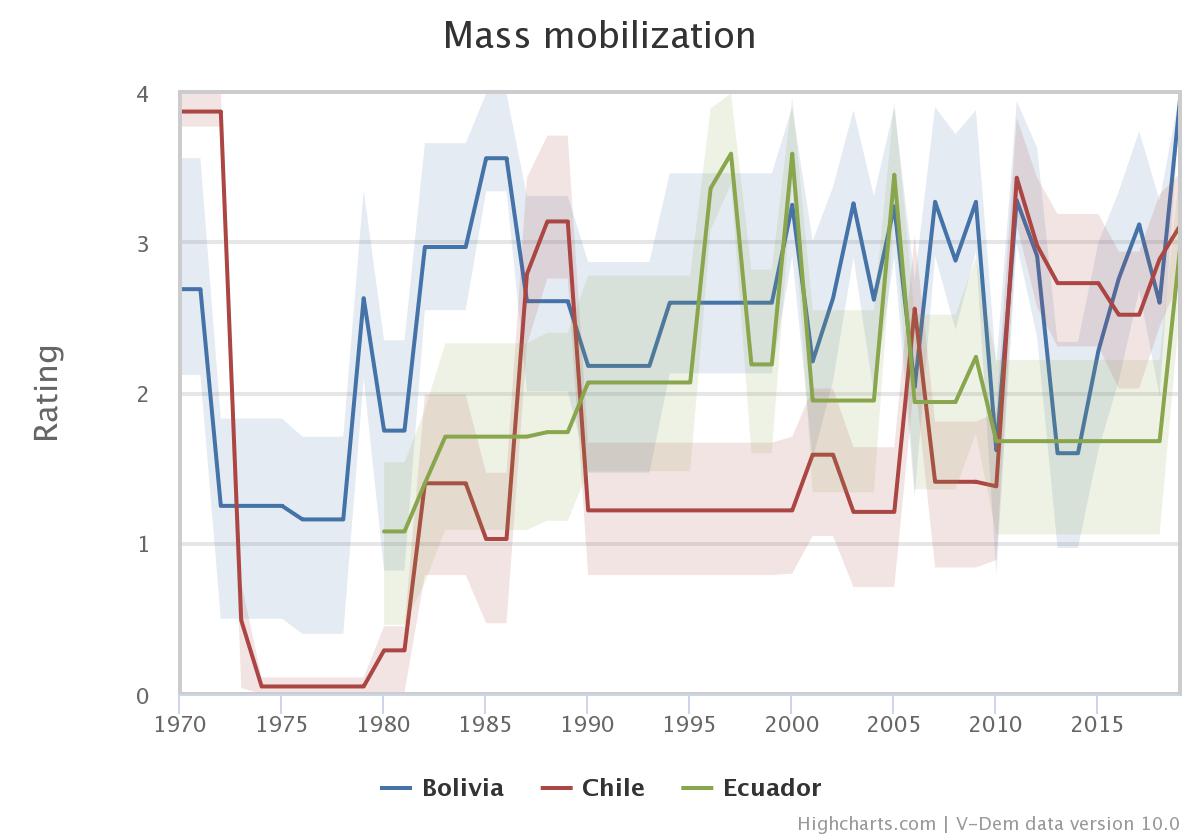Chile‘s Long Road to a New Constitution
By: Lydia Finzel
Apr 20, 2020
In late 2019 after a subway fare hike in the capital Santiago, thousands of Chileans took to the streets protesting for improved living conditions and constitutional reform, rejecting the existing constitution that was enacted under military dictatorship in 1980. The protests eventually forced the government to schedule a referendum on a new constitution for 26 April 2020. While the referendum has been postponed due to the global outbreak of the Corona (COVID-19) virus, mobilization and citizen’s participation in Chile continues to grow.
This week’s graph explores citizen protests in three Latin American countries using the new indicator for mass mobilization. The variable highlights demonstrations, strikes and sit-ins mainly organised by non-state actors, measuring their frequency and size. Larger values indicate larger and more frequent mass mobilization events within the country.
The data reveals a recent increase in mass mobilization events in Chile. Currently, the frequency and size of mass demonstrations mirrors those seen in the late 1980s, when many Chileans sought reforms to alleviate unemployment and falling wages in the face of increased military spending under Pinochet. Today, with the concentration of wealth and political power in Chile’s economic and political elite, many Chileans have similar demands for better health, education, pension, and wage policies.
Furthermore, the graph illustrates that mass mobilization events are on the rise in other Latin American countries. With Bolivia at an all-time high and Ecuador having several large- and small-scale events, the demand for economic and political reforms reverberates throughout the region.
Do you want to learn more about V-Dem‘s new mass mobilization variable and other indicators? Visit v-dem.net.


